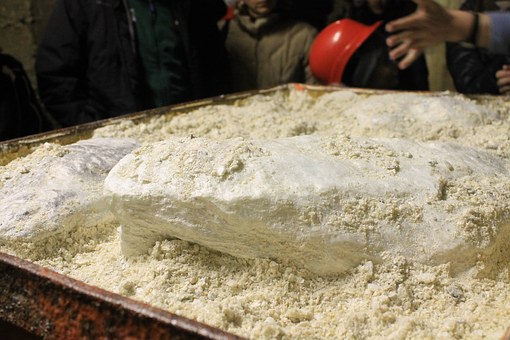What You Need to Know About Talc and Ovarian Cancer
You might not have expected the first big headlines of 2023 to be about baby powder, but talc and its carcinogenic properties are all anyone can discuss after this shocking revelation: Johnson & Johnson announced it would no longer be selling talc-based baby powder. The pharmaceutical giant has been fighting several legal cases for nearly a decade, all alleging the company’s knowledge of the cancer-causing asbestos in its talc-based products.
To properly understand the history of these lawsuits and the biology behind them, we need to understand three fundamental questions: what is talc, what is ovarian cancer, and does talc cause ovarian cancer?
What is Talc?
Talc, simply put, is a mineral made from a combination of magnesium, silicon, and oxygen. Talc’s chemical structure has several useful properties when crushed and mixed into a powder. Talcum powder is commonly used to absorb moisture, reduce friction, and prevent rashes on the skin. It is also found in a wide range of products, including baby powder, facial powders, foot powders, medicated powders, cosmetics, and intimate hygiene products.
While the powder is beneficial, it could have some severe side effects, especially in the case of personal hygiene products. This is because, in addition to its mineral properties, talc naturally contains trace amounts of asbestos. Asbestos is commonly associated with lung-based cancers in the construction industry, as construction workers exposed to asbestos on the job could breathe in the carcinogen. Talc’s presence in personal hygiene products could also introduce cancer-causing mineral fibers to the uterus, ovaries, and more.
What is Ovarian Cancer?
Ovarian cancer occurs in the ovaries of the female reproductive system. While the cancer is uncommon, it causes more deaths than any other type of cancer of the female reproductive organs.
Part of what makes ovarian cancer so deadly is how its symptoms can be confused with other common illnesses and ailments. Common symptoms include pain or pressure in the pelvic area, lower abdomen, or back, vaginal bleeding, abnormal periods or discharge, bloating, weight gain or loss, gas, nausea, vomiting, frequent or urgent urination/constipation, and loss of appetite.
Ovarian cancer can be diagnosed via a physical exam, pelvic exam, laboratory test, ultrasound, or biopsy. Getting a diagnosis early is integral to a patient’s chances of recovery, so getting tested early and often is strongly advised.
For those who have been diagnosed, it can be some of the most devastating news to receive. Post-diagnosis, the first thing most people do is look into potential causes and sources, which has led to a series of lawsuits against Johnson & Johnson and other talcum powder producers. This begs the question: Does talc cause ovarian cancer?
Does Talc Cause Ovarian Cancer?
The first study claiming a connection between talc and ovarian cancer was in 1971, when scientists unexpectedly discovered that over 75 percent of ovarian cancer tumors contained talc particles. Since then, a long series of studies have looked into the connection between consistent talc exposure and ovarian cancer.
There is a consensus that talcum powder is carcinogenic, but the increased likeliness of developing ovarian cancer due to continuous use is unclear. One study compared those with and without ovarian cancer, and determined that those who regularly used talcum powder on their genitals and sanitary pads were two-to-three times more likely to suffer from ovarian cancer. Similarly, a 2016 study collected data from 4,114 women over 16 years, and found that those who used talcum powder regularly had a 33 percent higher risk of developing ovarian cancer. In another study, the Tisch Cancer Institute of Mount Sinai Hospital published an analysis of 24 studies and found that those who used talcum powder had a 20 to 30 percent higher risk of ovarian cancer.
After several studies reached this relative consensus, the International Agency for Research on Cancer – a group affiliated with the World Health Organization – classified the use of talc-based body powders as possibly carcinogenic. This is especially concerning as roughly two out of every five women regularly use talcum powder as an intimate hygiene product.
This revelation has been the source of a series of lawsuits lobbied against talcum powder producers such as Johnson & Johnson. In 2016, Johnson & Johnson lost three talcum powder lawsuits and agreed to pay a $100 million settlement in 2021. After attempting to resolve future talcum powder claims in a controversial bankruptcy strategy called the “Texas 2-step”, the pharmaceutical company has decided to remove talc-based powders from its lineup of products officially.
This is a massive win for everyone who has been affected by talc-based powders. However, many others have not received the compensation that is rightfully due. If you or a loved one has developed ovarian cancer after consistently using talc-based powders, contact us today at Jan Dils, Attorneys at Law.
 Free Case Consultation
Free Case Consultation  Free Case Consultation
Free Case Consultation 


